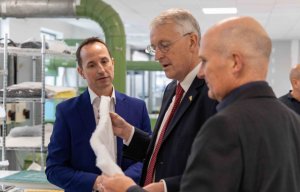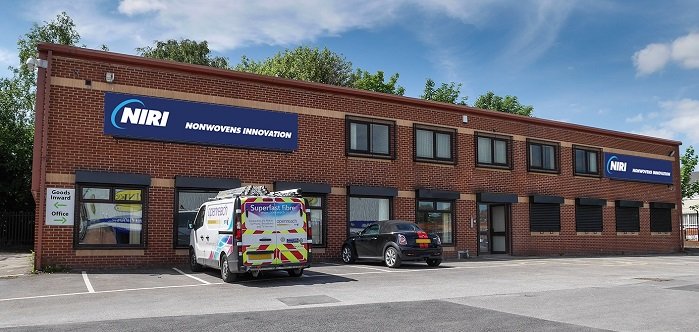
NIRI compeletes £1.2 million relocation
The investment in new facilities includes a range of equipment.

31st May 2018
Innovation in Textiles
|
Leeds
With over 450 projects completed for more than 200 clients, the Nonwovens Innovation & Research Institute (NIRI) has invested significantly in a range of new equipment, made possible by the Institute’s move from the University of Leeds campus to a new facility.
Using Technology Readiness Levels (TRLs) to demonstrate the innovation process, each project undertaken by NIRI – whether consultancy for commercial clients or co-funded joint ventures – is evaluated against the parameters for each technology level and then assigned a TRL rating based on the project’s progress.
The investment in new facilities includes a range of equipment. “With over 10 years’ track record in successful R&D, helping clients develop and improve products and processes across numerous sectors, this further investment in testing and production equipment enhances our extensive facilities, building on our research excellence and further helping realise the business imperatives of our industry collaborators and commercial clients,” commented Dr Matthew Tipper, Business Director at NIRI.
Purchase of an Inovenso NE300 electrospinner responds to the increasing use of nanofibers across a whole range of sectors, the institute reports. A laboratory scale electrospinning unit, able to produce uniform nanofibrous structures at an area of up to ~24x37cm, the electrospinner is designed to be compatible with a broad range of polymers, PA, PET, PVA and PU, and various solvent systems.
The equipment applied voltage can be altered from 0–40kV, with the capability to alter the distance-to-collector from 3.5-23.5cm. The unit works on a closed volumetric feed system to minimise solvent evaporation and is capable of utilising 1-9 of its nozzles. This allows small-scale investigation and parameter optimisation, before scaling to larger sample sizes. Structures can be collected on a static collector or onto a rotating drum that is capable of 80–2,000 RPM with the ability to align fibres, and the system allows for fibre diameters lower than 100nm.
A new Perfojet flatbed hydro-entanglement pilot line can work with widths ~35cm. The flexibility of this pilot line allows 1-3 injectors to be utilised with a varying hydro-entanglement pressure of 20-180 Bars, at belt speeds of 0-22m/min. With various jet strip diameters available to NIRI, from 90-140 µm, key hydro-entanglement processing parameters’ adjustment allows the degree of entanglement to be tailored to specified requirements.
NIRI’s new Phenom-Pro SEM is ideal for imaging nonwoven structures at micro-scale. With an acceleration voltage of 5-10kV, high resolution images can be produced without the need for an additional conductive coating. The SEM provides a powerful tool for understanding the characteristics of a nonwoven fabric, including; fibre orientation, manufacturing methods and blend composition. With the aid of an integrated software package, NIRI can produce fibre diameter distributions and surface pore area distributions autonomously.
Investment in a new liquid extrusion capillary flow porometer, a Porolux 100FW, helps NIRI’s clients through the quick quantification of through-pore diameters present in a nonwoven structure. The equipment uses gas-liquid extrusion to detect the smallest, mean flow and largest pore diameters while providing a relative air-flow distribution through the detected diameter range. The Porolux 100FW has the potential to measure through-pore diameters ranging from 0.43-500µm, making it ideal for characterising the pore sizes of a broad range of nonwoven media.
NIRI has responded to continued growth in the hygiene sector, where the balance of wet strength and user comfort is considered alongside biodegradability and dispersibility, through the specification and purchase of bespoke testing equipment. Its new liquid strike through time and re-wet testing equipment is designed in accordance to NWSP 070.7.RO (15) and NWSP 070.8.RO (15).
This can accurately measure the penetration time for successive insults of a desired liquid through a sample’s surface in conjunction with the sample’s resistance to release liquid to its surface under loading. These measurements are particularly pertinent when analysing hygiene products and considering end user comfort.
A new fluff pulp specific volume and absorption tester SCAN-test, designed in accordance to SCAN-C 33:80, measures the specific volume of a pulp fluff specimen in conjunction with its absorbent capacity and the speed of a desired liquid under a standard load.

Business intelligence for the fibre, textiles and apparel industries: technologies, innovations, markets, investments, trade policy, sourcing, strategy...
Find out more